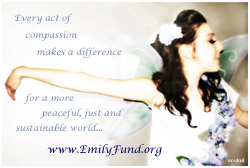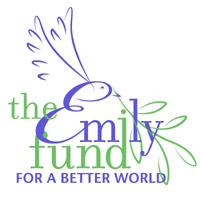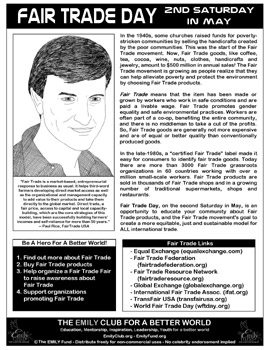Fair
Trade Day In the 1940s, some churches raised funds for poverty-stricken communities by selling the handicrafts created by the poor communities. This was the start of the Fair Trade movement. Now, Fair Trade goods, like coffee, tea, cocoa, wine, nuts, clothes, handicrafts and jewelry, amount to $500 million in annual sales! The Fair Trade movement is growing as people realize that they can help alleviate poverty and protect the environment by choosing Fair Trade products. Fair Trade means that the item has been made or grown by workers who work in safe conditions and are paid a livable wage. Fair Trade promotes gender equality and safe environmental practices. Workers are often part of a co-op, benefiting the entire community, and there is no middleman to take a cut of the profits. So, Fair Trade goods are generally not more expensive and are of equal or better quality than conventionally produced goods. In the late-1980s, a "certified Fair Trade" label made it easy for consumers to identify fair trade goods. Today there are more than 3000 Fair Trade grassroots organizations in 60 countries working with over a million small-scale workers. Fair Trade products are sold in thousands of Fair Trade shops and in a growing number of traditional supermarkets, shops and restaurants. Fair Trade Day, on the second Saturday in May, is an opportunity to educate your community about Fair Trade products, and the Fair Trade movement's goal to create a more equitable, just and sustainable model for ALL international trade.
|
 | The
Emily Fund |  |

